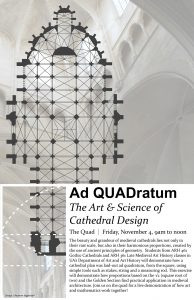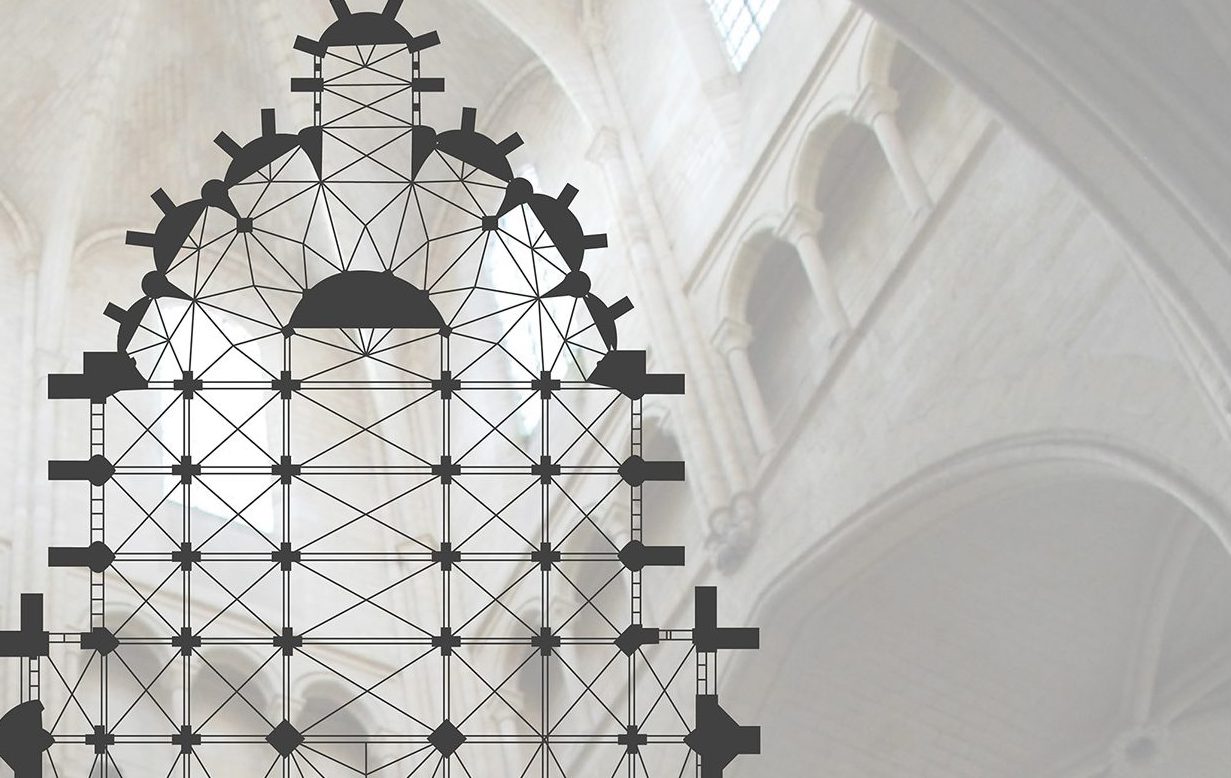 Editors/Producers Note: The demonstration will likely have the most visual appeal beginning at 10 a.m. Nov. 4 on the UA Quad.
Editors/Producers Note: The demonstration will likely have the most visual appeal beginning at 10 a.m. Nov. 4 on the UA Quad.
TUSCALOOSA, Ala. — The beauty and grandeur of medieval cathedrals lies not only in their vast scale, but also in their harmonious proportions, created by the use of ancient principles of geometry.
The designers of the great cathedrals were interdisciplinary thinkers. For them, geometry was just as much art as it was a branch of mathematics.
In a demonstration of how art and mathematics work together, students from Dr. Jennifer Feltman’s 461 Gothic Cathedrals and 361 Late Medieval art history classes in UA’s department of art and art history will show how the scale plan of the Cathedral of Amiens was laid-out ad quadratum, Latin for “from the square,” using simple tools such as wooden mallets, stakes, string and a mason’s square.
Their demonstration will be on the Quad from 9 a.m. to noon Friday, Nov. 4.
“Ad QUADratum: The Art & Science of Cathedral Design” will demonstrate how proportions based on the square root of two and the golden section find practical application in medieval architecture.
“The goal is to show that geometry is fundamental to Gothic design and that knowledge of geometry was passed down from master to apprentice via actual practice,” said Feltman, UA assistant professor of medieval art and architecture. “It will be, quite literally, a hands-on exercise in problem solving.”
Students are preparing for the activity by reading “The Geometry of Creation” by Robert Bork, in which Bork argues that drawing and the design process are fundamental to the Gothic aesthetic. Bork also asserts that Gothic design was hard to understand in later periods because it was difficult to explain geometrical design in words.
“The exercise brings to life questions about the actual construction process in the Middle Ages,” said Feltman. “It gives me a chance to explain how some of the great advances in architecture arose out of real-life problems faced by the builders of the past.”
Feltman joined the UA faculty in 2016. Her research focuses on the complex ways in which works of medieval art, whether architecture, sculpture, or manuscripts, intersect with aspects of culture, such as intellectual history, religious practice and political discourse.
UA’s department of art and art history is part of the College of Arts and Sciences, the University’s largest division and the largest liberal arts college in the state. Students from the College have won numerous national awards including Rhodes and Goldwater scholarships.
Contact
Derek Hooper, student writer, media relations, 205/348-5320; Chris Bryant, UA media relations, cbryant@ur.ua.edu
Source
Dr. Jennifer Feltman, 205/348-0814, jmfeltman@ua.edu
